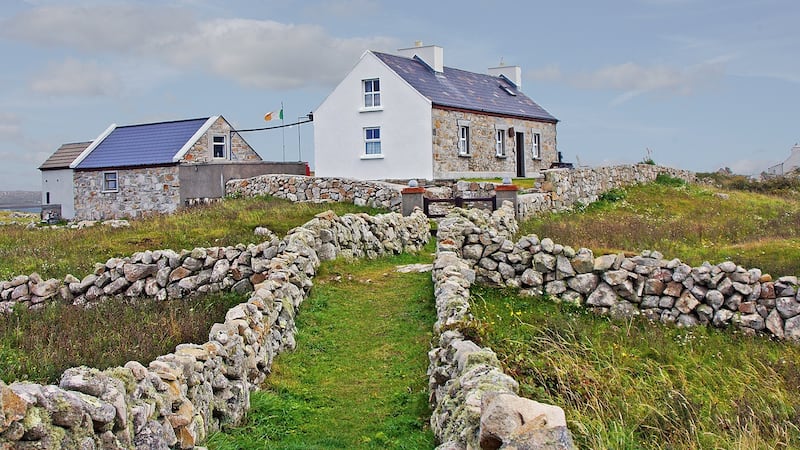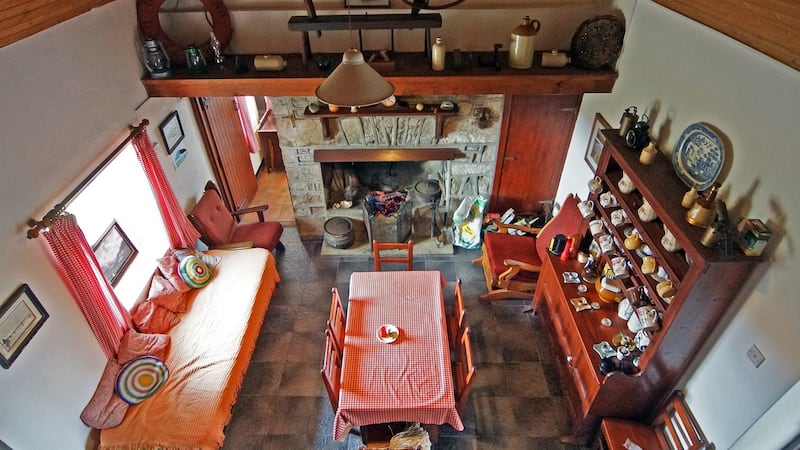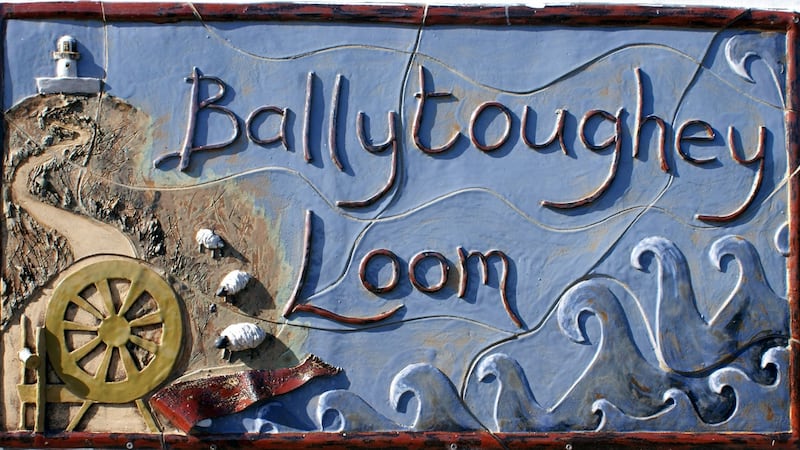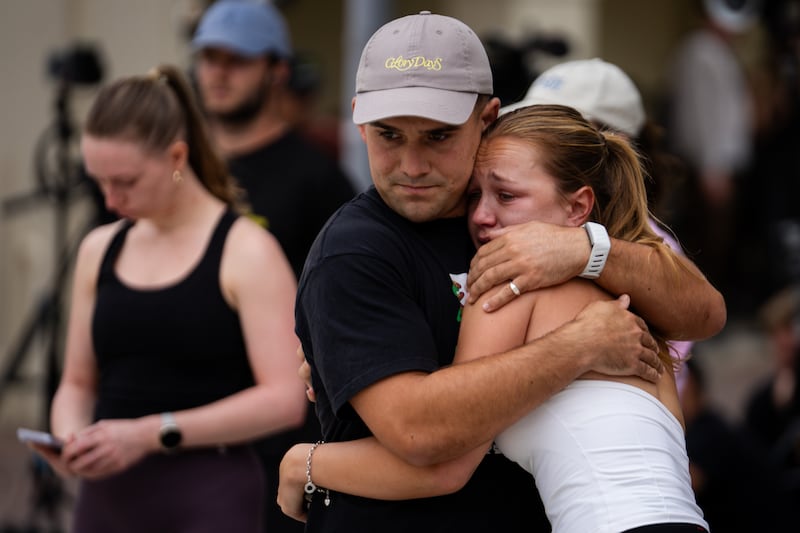When news of another storm hits our screens most of us will batten down the hatches, but really only metaphorically. For islanders, on the frontline of weather rolling in, battling the elements is a real and everyday occurrence.
There are days and weeks when they are surrounded by the elements, grey skies and sea all morphing into one, rollers higher than a house and winds that have beaten any trees or bushes into hunched submission. There is no sight of the mainland and this level of detachedness has taught them to be self-sufficient and stoic.
"We understand resilience," says Jerry Early, a second-generation islander who runs Early's bar on Arranmore in Co Donegal, but on the day we talk is stranded on the mainland because of storms. He takes this in his stride because it is just one of the many additional layers there is to life on our offshore islands.
According to census figures, five of our 26 counties have islands that are inhabited. Collectively they have a population of 2,734 souls, across 27 islands, according to the 2016 figures. This is down 5 per cent from the 2011 figure of 2,879.
Galway's offshore islands are home to 1,405 people. When you think of Co Galway, the Aran Islands loom large, both in size and in their historic and cultural contributions to Irish life. North of Inishmore, the largest of the Galway islands, is Inishbofin, "a place where Black Friday had no impact whatsoever but storms, like those in 2014, destroyed a lot of the island," says Marie Coyne, a native who can trace her roots back four or five generations and who set up its charming heritage museum a couple of years back.
Weather permitting, families of kids of secondary school age have to leave the island on a Sunday to attend lessons on the mainland, returning on Fridays. After dark the place no longer smells of peat fires as islanders have, for the most part, stopped cutting turf, instead burning wood or smokeless coal brought in by the ferry. Electricity comes under the sea in a cable and cars that use petrol have to transport their fuel from the pier in gerry cans. When the tourist season slows to a halt at the end of October, Coyne welcomes “the lovely feeling of nothing about to happen”.
Uninhabited
It's a sentiment echoed on Mason Island – Oileán Máisean as gaeilge – situated about a quarter of a mile offshore from Carna, a village in the heart of the Connemara Gaeltacht. It is one of the country's many uninhabited isles. In 1881 it had a population of 127 souls, but the last islanders came ashore in the mid-1950s. Next stop is America.
Local man Tom Geary bought a ruin of just four walls there in 1991, from a fella in the pub when he had "a good drop taken". It had belonged to his father's first cousin. He borrowed the money from the bank to pay for it, the vendor giving him back a £50 note for luck. He spent the next few years rebuilding it, transporting all the materials by currach, a crossing of about 20 minutes, and moving everything from the cut stone pier on the island up to the house by wheelbarrow. These included bricks, bags of cement, slates for the roof, windows, tiles and sanitaryware. He repaired crashed cars for a living so this, in a way, was a bit of a busman's holiday.

The house has central heating, but the oil he uses is also taken across by boat, in five-gallon drums. Electricity is courtesy of a diesel-operated generator that was flown in by helicopter. Running water is sourced from a pipe that runs under the water to the mainland. If there’s a blockage he attaches a compressor to one end of the pipe and watches the water to see where the bubbles hit the surface and makes repairs there – a technique that only works in calm weather. For sanitation there is a septic tank.
In terms of connectivity there’s a television that picks up three channels, and there is a mobile signal but it is patchy. There’s also a CD player and a DVD player.
He brought all the furniture out by boat too. The dresser in the kitchen was made on the island and then moved to the mainland. A sean nós singer, Josie McDonagh, repaired it for him.
Shoulder seasons
You can rent the house, which sleeps up to 11 people, by the week in summer and shoulder seasons. He doesn’t offer it to rent in the winter because you might end up staying longer than you planned. But even if it does blow a hurricane you will be safe and sound inside. The fact the house also boasts a shebeen to the back, complete with taps and a cooler, means that if you bring across your own keg you’ll have your very own pub on site.

Geary will transport you out in the currach and you need to bring all food and necessities with you. If you need more supplies you can call Geary to take you ashore and to the nearest shop in Carna, about a 10-minute drive. One visitor preferred to windsurf across the channel to get bread and milk on the mainland.
Máirín Ní Churraoin, postmaster at Carna, was the first of her family to stay on the island since her ancestors – formerly Geary’s neighbours – left for the last time in the 1890s. “When the weather closes in it is amazing. You can see the sea getting wilder and the blackness rolling in and you do feel very far away.” She stayed there in August.
Further north again, Clare Island guards the entrance to Clew Bay, Co Mayo like an Egyptian sphinx. The one-time fortress of pirate queen Granuaile first welcomed American Beth Thibeault offshore in the late 1970s, when she was a photography student and staying in Westport with her lecturer and classmates. The island had no electricity and sanitation was pretty basic. "Most homes did not have running water inside the house or toilets," she says.
She stayed a few days and returned the following summer, eventually moving into the lighthouse in 1981, when it was owned by an American family and used as a holiday home, one of two houses within the compound on the cliff, that had no electricity. There was a flush toilet, but it was in an outhouse, and when the wind screamed like a banshee she would use a bucket inside, afraid that a slate might slice her head off if she braved the elements.
“It was really exposed and some nights walking home, it’s about two miles from the pier, I would be literally lifted off my feet, often crawling the last few yards on my hands and knees.” In winter she used a paraffin lamp or candles and went to bed early. Electricity, which came in 1983, has been the biggest change in the last 200 years, she says.
Visiting the neighbours
Back then the island still had the culture of cuartaíochta, or visiting the neighbours’ homes of an evening, when you sit around, drink tea and talk. People still visited but the TV now blared in a corner and then they stopped visiting, preferring to tune into what was happening further afield on their TV screens.
She stayed and married islander Máirtín Moran. When she was pregnant with her first child in 1985 she had to travel to the mainland and spent a month in a B&B in Castlebar in anticipation of the birth so that she wouldn't get stuck on the island. She spent that time alone as her husband had to stay and mind his elderly father.
In winter one pub is open from Thursday to Sunday only. There is internet and, while download speeds are slow, you can watch Netflix. The only place to get a cup of coffee is in the shop and whoever you meet you meet – it is your social outing for the day, Moran says. She has a car now and, although she still likes to walk, she uses it to shop so she doesn't have to carry the groceries back by hand.
About 159 people are living on Clare Island full-time. In summer up to 300 might spend the night and hundreds more as day-trippers.

Summer is when everyone makes their money, she says. She runs a craft shop, Ballytoughey Loom, open April to October, in what was her husband's family farmhouse, where the wool shorn from their Achill blackface sheep is used to weave rugs, scarves and table runners and table mats. Guests staying at the Lighthouse, which has since been modernised and now offers boutique accommodation, can dine on her table linen. She dyes the wool using natural materials she forages on the island; lichen, bog myrtle and gorse flowers are just some examples, in an old poitín pot on her stove to hand-dye batches.
Moran and her husband now live in a council house just below the original holding. He is now of pensionable age, an age she reaches next year.
Drama productions
In winter everyone has the free time to meet up and at the community centre the locals come together to put on drama productions, she says. There's also a Ceoltas group that sing songs and dance. "After being diffused for the busy months of summer the sense of community is very strong."
Southwest of Baltimore in Co Cork is Sherkin, a place Fiona Acton, who ran a B&B here for several years, has called home for 13 years, although she still describes herself as a blow-in. "People here have to be self-sufficient," she explains. After Storm Ophelia their slate roof lost four tiles, and her husband Joe just mixed the concrete and did the repairs himself.
You also have to keep an eye on the weather. She uses the app XCWeather for wind and weather observations. On Cape Clear, the island beyond Sherkin, Englishman Steve Wing, Birdwatch Ireland's warden at the island's observatory, an old two-storey house that was formerly a fish salting plant and a shop where you can stay and sign up to a bird-watching course, listens to the shipping forecast and uses the Wind Finder app to try to plan ahead.
“In winter you have to be more flexible and give yourself time to get off the island. you may not get off the day you had planned to. You also need to keep a well-stocked larder and freezer for when you can’t get off.”
Originally from the north Devon coast, he spent six years on Lundy in the Bristol Channel, an island owned by England’s National Trust. They are similar but also very different, he says. “Cape Clear is a proper little village community that just happens to be offshore. Rather than a bus ride to town we’re a boat trip away.”
Let us take you to the island
Ballytoughey Loom is a craft shop operated by Beth Moran on Clare Island from April to October. Her hand-woven rugs, made from wool from her own herd of Achill blackface sheep and dyed using materials foraged on the island, sell from about €1,000 upwards while the linen placemats are €200 for a set of four.
clareislandhandweaver.com
You can rent Mason Island by the week through Shamrock Cottages. The traditional stone cottage can sleep up to 11 in its four bedrooms and also boasts its very own shebeen to the back. You can swim in white sandy beaches, jump off the stone pier and walk without ever meeting another soul, save for the odd otter and wild sea birds, and you may be observed by the odd seal or basking shark.
Shamrockcottages.co.uk
If you're interested in bird-watching you can stay at the observatory on Cape Clear and even sign up to a series of classes with the organisation.
capeclearisland.ie/birdObservatory


















